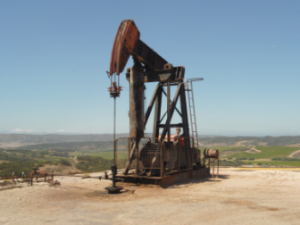Along with 80 researchers at UCSB, Professor Leah Stokes of Political Science, Environmental Studies Professors David Pellow and Emily Williams signed a letter that urges county decisionmakers to consider the full costs and impacts of new oil drilling.
“On March 13, the Santa Barbara County Planning Commission is scheduled to vote on whether to approve the first of a trio of new oil projects in Cat Canyon, in the northern part of our county. Specifically, three oil companies — Aera Energy, ERG Resources, and PetroRock — are proposing 750 new oil wells near Santa Maria.
If approved, these projects would triple our county’s onshore oil production and move us in the wrong direction on climate change and environmental justice. For these reasons, we, along with 80 researchers at UCSB, have signed a letter that urges county decisionmakers to consider the full costs and impacts of new oil drilling.
Expanded fossil-fuel production in our county would increase our carbon emissions, worsening climate change. In fact, this proposed 40-year project is directly at odds with the county’s own goal of decreasing greenhouse-gas emissions 50 percent by 2030. Emissions from the project alone would account for about half of the county’s planned reductions, making it even harder for us to meet our goals. This is not “clean” oil: The carbon intensity of California’s oil fields is some of the highest in the country. To even get the oil out of the ground, more fossil fuels have to be burned.
We’ve already seen what warming the planet by just one degree Celsius has done to our community. We have all lived through the consequences of climate change with the Thomas Fire, the Montecito debris flows, and the years-long drought.
These experiences are linked to climate change. Research has shown that since the 1980s, climate change has doubled the amount of land burned in the Western United States, putting low-income populations and people of color at particular risk. Extreme precipitation, like the hard rain that fell the morning of January 9, 2018, is more likely under climate change. We can already measure climate change’s significant contribution to our latest drought. If we continue on this trajectory, some scientists project that in the next 80 years, Mediterranean regions like our own will become deserts.
Santa Barbara County is highly vulnerable to climate change — we should be part of the solution, not the problem. But the issue goes beyond the local risks we face from climate change. Water is also a key concern with this development.”
To read their full article, visit the link below.
Related Link:
News Date:
Wednesday, March 6, 2019
March 25, 2019 - 12:23pm







